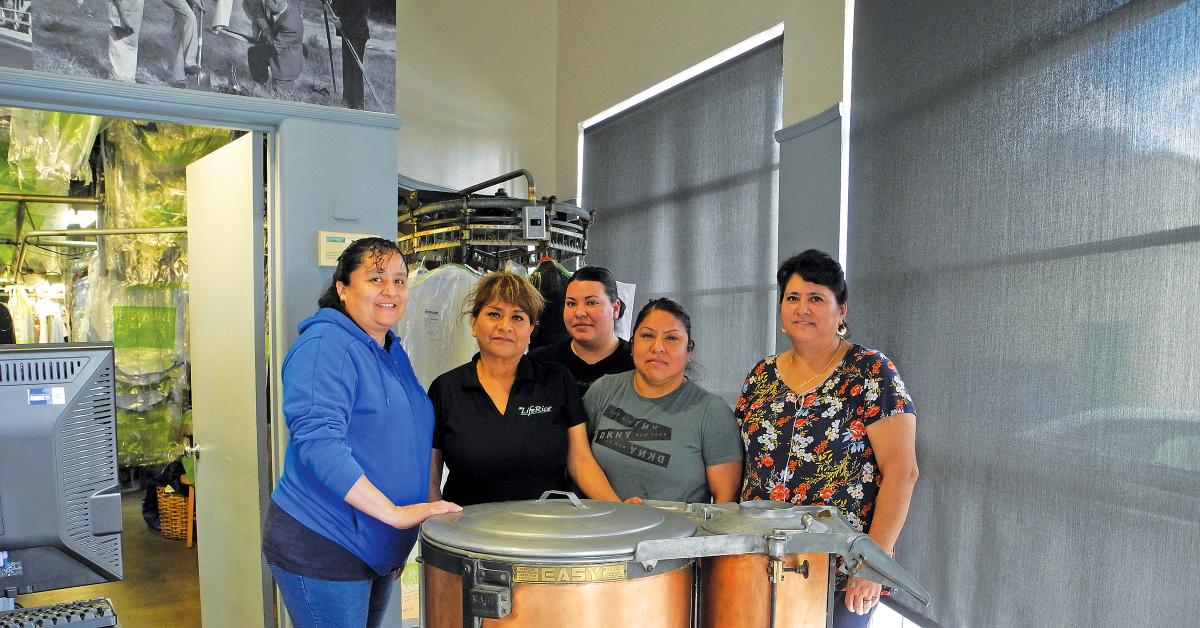CHICAGO — Smart Machines and Smart People go together in garment care operations today. Advanced technology walks forward hand-in-hand with a well-trained team, well-suited to handle the smartest of smart tech in your garment care world. Our two panelists, from Bryan’s Cleaners and Greene’s Cleaners, respectively, answer questions all about getting smarter today.
Hey, Smarty Pants! Think you know everything?
In today’s garment care world, that just might not be a boast. It might be the honest truth about your technology and your team working together at highest efficiency. That’s really, um, smart!
These operators share their experiences with melding new machines and technology with well-trained, great team members for best efficiencies. Hear this special Q&A-style panel talk all about smartness in their tech, smartness in their people, and the smarts to manage it all and do it well. Let’s get smart!
Our second panelist hails from Greene’s Cleaners, Napa, California, which celebrated its 100th year in business in 2019. It has grown with Napa Valley, in the process becoming an important community partner, says Laurie Greene, co-owner with husband Alonso, fourth owners of the business. The company name comes from George Greene, who established the company.
Greene says she grew up in the business which her parents purchased the year before she was born. At the time, they had one employee other than themselves. Thirty years later, the company has 30 employees.
“Alonso and I moved to Napa in 2003 when Alonso began working with my parents to learn the business. In 2009, we purchased it and they fully retired. The success of Greene’s has largely come from maintaining a strong commitment to quality and community.”
Q: Can you tell us, generally speaking, how much smarter has machine technology become in cleaning operations today?
Greene: “One of the big leaps in the machine technology I’ve seen over the years is how specific we can get with cleaning programs and the ability to create a program for specific items that our business services a lot of, which may differ from a cleaner in another area.
“Recently, the technologies we are seeing in new equipment address energy efficiencies in addition to cleaning or finishing efficiencies. For many years, equipment design focused solely on operational efficiency and garment quality. Recently, I have seen manufacturers who still focus on those key areas, but incorporate energy or water conservation as well.”
Q: Along with modern technology, owners need the labor to run these smart machines. What’s that like right now, trying to match up new technology with the team members who have to run it?
Greene: “My experience has been that as technology improves, it is actually easier to hire and train staff to operate the equipment, primarily because of the incorporation of programming and automation.
“I don’t necessarily need a garment care expert when equipment can be programmed to differentiate garment needs. For example, we found we were cleaning a lot of embellished garments. In the past, an operator would have needed to know how to override a cycle to set a shorter time, lower temperature, spin, etc., to ovoid damaging the garment. Now we can contact our Kreussler rep to add a program that has settings to best care for that type of garment. And they are able to do it in very little time.”
Q: Can you share some of the challenges owners face training their team members on new machine tech?
Greene: “Over the last few years, my focus has been on implementing systems and procedures to ensure consistency and quality throughout our operations. Training staff to follow a procedure is simple compared to training someone to understand how a machine works or the differing properties of various textiles.
“The biggest challenge we face is when we hire an experienced operator and we need to undo bad habits or teach someone to trust the equipment. Maintaining equipment so it can be trusted to operate as designed is key.”
Q: Where has technology improved the most in today’s machines?
Greene: “The ability to make adjustments has improved all around. From temperature settings to pressure settings to fit settings, like length, the improved tech enables an operator to fit the machine to the garment and their operation style rather than adjust how they handle each and every garment.”
Q: About efficiency, is it hard to find the right fit between an individual team member and the specific machine?
Greene: “We do a lot of cross-training so that our production staff is comfortable with most of the equipment. In doing so, we have sometimes identified where someone thought they were best suited to one station, they actually excel at another.
“I wouldn’t say it’s difficult, but it requires a flexible outlook and to approach hiring in an untraditional way. For example, years ago we would look to hire a pant presser. Now, we hire production staff and counter staff. The only real differentiators in those two types of people are schedule availability and English fluency. Mindset and work ethic are more important to us than technical skill.”
Q: Can you share a memorable story about when a team member and their machine just clicked?
Greene: “Last year, we had (drycleaning consultant) Liz Davies out for a week working with our production manager and staff. A presser who has worked for us for 14 years and is one of the most skilled pressers I have ever seen learned a new technique for using the SAM unit that changed her world. She learned to trust the equipment and use the available settings to get the most out of what it was designed to do. At first, she was skeptical. Then she embraced it and it made her so happy because she reduced her need for touch-up, and garments like chef coats were no longer avoided or put off because they interrupt her flow.”
Q: Can you share a tip for how our readers can best combine smart, new technology with their smartly trained team?
Greene: “First of all, ask questions. Assuming you know all of the capabilities of the equipment hinders the ability to utilize tech. Equipment manufacturers, reps, consultants are all available.
“The garments we process change in style, construction, materials. Reaching out and asking if there is a technology to address a new issue provides the possibility of making the job easier and more successful for your team. Then, create a procedure around it and train on the procedure.”
Q: Better tech along with a well-trained team improves efficiency, but what should an owner watch out for along the way?
Greene: “Some things should never be shortcut. Testing garments, especially ones with unfamiliar materials, will never go away. No matter how much we improve our processes and utilize smarter equipment, we cannot control garment manufacturers or trust the ability to process an item.”
Q: Anything else you’d like to add about ‘Smart Machines, Smart People’?
Greene: “The area we have recently found the most efficiency improvement and cost savings from technology implementation has actually been on the customer service side. Because we are in an area with a hospitality-centered economy, there is a lot of competition for that type of labor.
“By utilizing tech which replaces some of the traditional customer service functions, such as answering basic questions, we are able to have fewer people serve more customers.
“And those people provide better service because their time is freed up to focus on the more involved customer issues. In prior years, the technology around item tracking and inventory management allowed for huge time savings across departments.”
This concludes our feature. Are you smarter now? Huh, Smarty Pants?
Miss Part 1? You can read it HERE.
Have a question or comment? E-mail our editor Dave Davis at [email protected].

